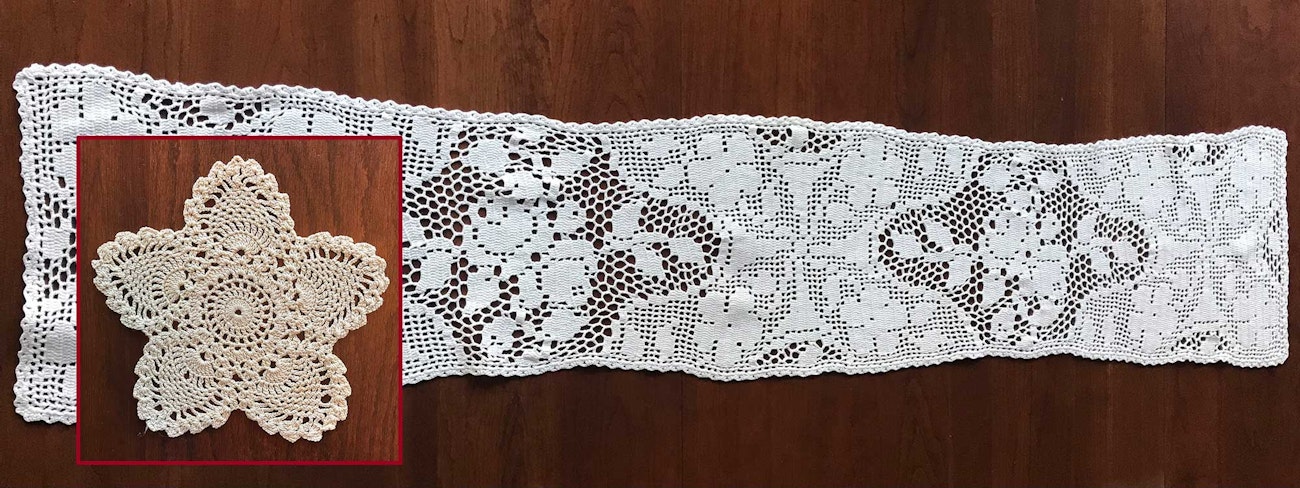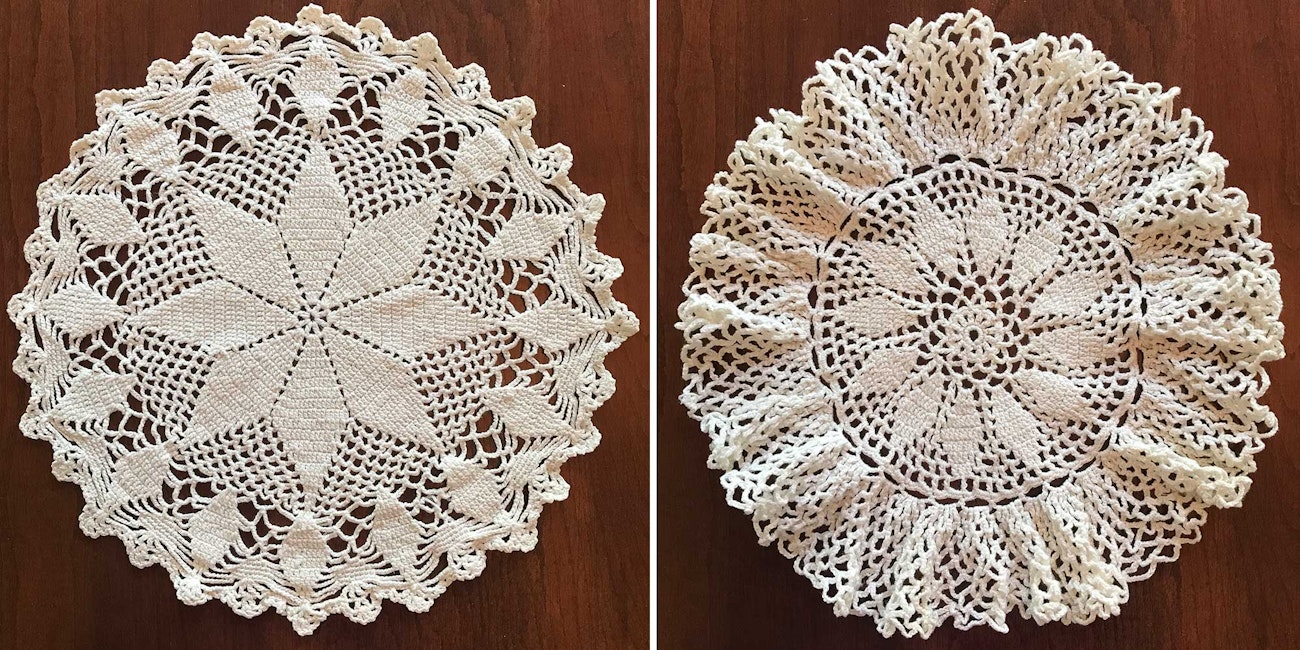Crochet was a familiar theme in my maternal grandmother’s home. The finely wrought pieces were everywhere: antimacassars on the backs of upholstered furniture, coverlets on the beds, doilies and runners on the tables, potholders and hot pads in the kitchen, afghans and shawls around Gram’s shoulders. They appear in the backgrounds of old indoor photos, and I recognized some of the pieces when I unearthed a trove of them in my mother’s hope chest. They now live in my house. Some of them are in use, on a table or under a plant pot, and some of them are simply displayed as the decorative and fascinating vintage handmade items that they are.

Deer-themed doily, crocheted by the author’s grandmother.
Textile Roots
Born around the turn of the twentieth century, my German grandmother and her three sisters all crocheted. The family was not wealthy, and some of the doilies appear to be constructed of string or fine twine; maybe that’s what they had at the time. Most are made of fine- or medium-weight cotton thread or yarn and are in remarkably good condition for their age. I imagine the young women peacefully seated at work with their hooks and wonder if they used patterns or created the designs themselves. I found no written patterns, so maybe it was imagination, creative dexterity, and love of beauty that resulted in the intricate pieces, some of which remind me of mandalas or a Mandelbrot set.
Most of the doilies are ten to eleven inches in diameter; one of my favorites is five inches wide and very fine. A three-dimensional quality is achieved by a dense flower border or a generous increase on the outer edge.

Long crocheted table runner made by the author’s grandmother; the inset shows the 5" doily that is a favorite in her collection.
Modern Uses for Vintage Doilies
If doilies seem out of fashion today, they can be transformed to show their beauty in different ways. On PieceWork’s website, Christine Weisenburger showed how she created a quilt with vintage doilies to preserve and honor the needlework skills of the women in her family. I recently acquired a fragile, colorful doily made by my husband’s Texan grandmother that we intend to frame and hang.

Some of the doilies bring to mind mandalas.
I’ve heard that the inclination toward handwork skips a generation. My mother preferred drawing pencils to hooks or needles, but I adopted crochet from my grandmother and have continued the craft for more than fifty years. I know the time and focus needed for those flowers and leaves and filet designs. I feel happiness and satisfaction when I add my latest finished piece to Grandma’s family collection and ponder the possibilities of passing my interest on to my younger family members.
E.S. Everett has been crocheting since 1968, when a friend’s mom showed her how to do the basic stitches after school. She loves to make small, complex pieces with cotton thread and enjoys making scarves and other larger pieces with various yarns for her volunteer group.

